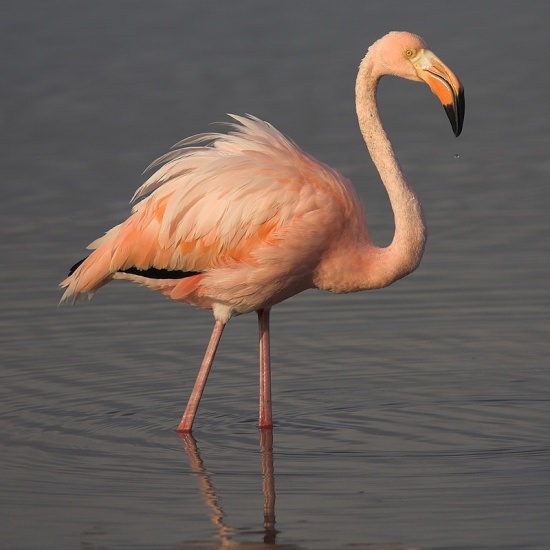| This article has been marked for merging It has been discussed that this article be merged with Greater Flamingo. |
- Phoenicopterus ruber ruber
Alternative name: Caribbean Flamingo
Identification
120-145 cm. Deep pink- orange plumage, bill - black tip, red-orange middle, pale yellow near eye, long neck and legs, light yellow iris.
Distribution
Caribbean, Mexico (Yucatan Peninsula), coast of northern South America (only regular and better than rare in Venezuela, Suriname and possibly French Guiana), offshore islands such as Aruba, Bonaire, and Curacao, and Galapagos Islands (Ecuador). Within the Caribbean probably most numerous in Cuba and Bahamas, but also common on Hispaniola.
Taxonomy
Often considered conspecific with the Greater Flamingo (Phoenicopterus roseus) of Europe, Asia, and Africa.
Habitat
Feeds in shallow lagunes, preferably with high salinity. As such they cannot breed every year in all colonies, as the lagunes can be too dry if the rain is lacking.
Behaviour
Breeding
Breed in large colonies in nests that consists of mud compacted into a mound on top of which the nest of mud and twigs is situated, this is built by both sexes. 1 white egg is laid, and incubated by both parents for 27-31 days.
Diet
The diet includes small crustaceans, molluscs, and insects.
Vocalisation
<flashmp3>Phoenicopterus ruber (song).mp3</flashmp3>
Listen in an external program
References
Colorado Education
External Links
Note: Results in photo search may include photos of Phoenicopterus roseus, which previously was considered a subspecies of this species (see Taxonomy).




